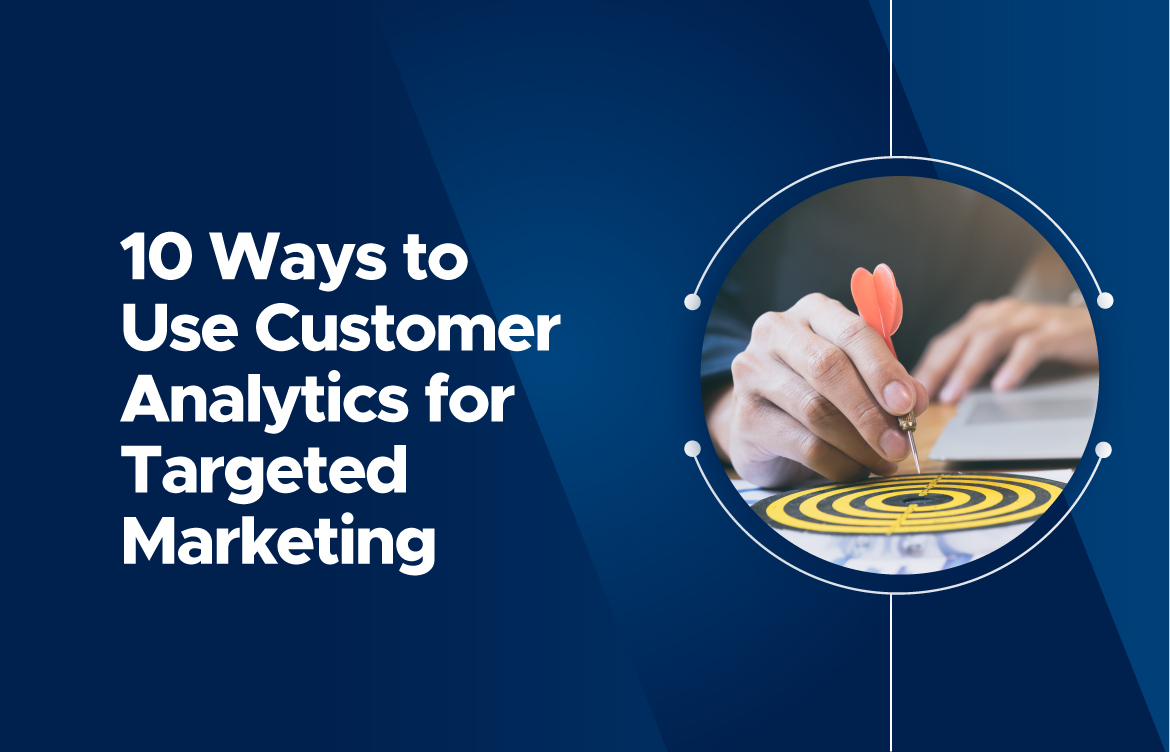Ten ways to use customer analytics for targeted marketing
The digital era consumes businesses with vast amounts of data. However, this data’s potential remains unused when you don’t have a strong analytics plan. Data analytics is the process of analyzing massive data sets where you can discover trends, correlations and patterns.
Thus, marketers can make use of data analytics where its ability to gain insightful information from unprocessed data, empower them to make well-informed decisions and launch targeted marketing campaigns. Customer data analytics involves analyzing customer data, market trends and campaign performance metrics.
These metrics provide a better understanding of consumer behavior, preferences and trends with the use of data analytics techniques. This article gives you a brief about how to use customer analytics for targeted marketing campaigns.
Ten Ways Customer Analytics for Targeted Marketing:
Consumers can access information about what to buy, where to find products and services, and how much to pay. Because they can locate the ideal products for their requirements, businesses need to make every effort to provide their target audience with the best products and marketing initiatives. Here are some approaches with customer analytics that aid the company in developing better strategies.
- Customer journey mapping: Businesses map their customer’s needs, pain points, emotions and motivation at every stage of the purchase journey. These data help them to detect the channels, touchpoints which influence customer decisions and satisfaction. Therefore, marketers make use of analytics to design, develop customized experiences which boost customer loyalty and retention.
- Customer segmentation: The process of dividing the customer’s data into groups according to the characteristics, behaviours and preferences referred to as customer segmentation. Marketers prepare the marketing strategy according to the needs and wants of each segment. This way marketers can create relevant and engaging content that improves overall customer satisfaction, and loyalty and increases conversion and retention rates.
- Feedback analysis: Businesses collect feedback from customers in the form of various sources like surveys, reviews, ratings, comments and customer service interactions. This way marketers can measure customer satisfaction and loyalty, areas of improvement and innovation to enhance their products or services and resolve any customer issues.
- Customer experience: Customer information that has been collected can be used to better understand, respond and generally focus on the target market. Data can be used to open a new location, launch a new offering and stay in touch with the target audience whether it is done through artificial intelligence, research or any product or service adjustments. You can provide the best customer experience which requires ethical data use.
- Marketing campaigns: Companies are capable of defeating their customers by being aware of the obstacles in their customer journey. Nothing makes a customer happier than to watch an issue resolve itself. An effective tool for marketing campaign creation is understanding customer needs. It is essential to engage with clients beyond the sales pitch. Based on significant celebrations, show your customers some love and compassion.
- Customer retention: Make use of the customer data to improve retention and reduce churn. You can identify the purchasing patterns and behaviour to see if any customers are at issues and provide tailored recommendations and outreach. This use of data for personalization improves customer experience, and loyalty and raises lifetime value.
- Growth opportunities: When you analyze the customer data to draw initial conclusions, then confirm the accuracy of your findings. This way businesses can use these data to create their roadmap, provide sales and understand how customers are using their product. This data helps to detect their opportunities for growth and create captivating stories for their prospective customers.
- Increase sales and revenue: Predictive analytics helps the business grow its revenue and profits. These data determine their profitable customers and products, maximizing their price, and promotions and developing cross-selling strategies effectively.
- Better decision-making: Businesses can improve their creativity and decision-making by using statistical analysis of data to test and validate their assumptions and provide data-driven cases and insights.
- Easy to test and optimize: For business assessing and optimizing marketing campaigns is necessary. There are various aspects of marketing strategy that need to experiment which includes website structure, email campaigns content, social media post or ads your run and evaluate the results, customer behaviour. You may find out what works best for your target market, enhance the customer experience, and boost sales, retention, and loyalty by testing and optimizing your marketing strategy.
Conclusion: The above-mentioned are the top approaches to make use of data from customer analytics and create effective target marketing campaigns. These target market analytics help to understand your customer, and the viability of a new product and can discover new exciting markets or opportunities. If you’re interested in business and marketing, enroll in Sri Kaliswari Institute of Technology, one of the top 10 colleges for an MBA in business analytics that will help you to achieve your dream career in business.



